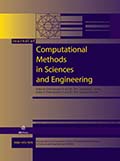Authors: Liu, Gang | Cao, Zixuan | Liu, Sen | Song, Bin | Liu, Zhonghua
Article Type:
Research Article
Abstract:
Target detection is the basis for automatic target recognition system of infrared imaging guidance to complete subsequent tasks such as recognition and tracking. Existing systems have not the autonomous learning ability of target feature, and it will be powerless once the task environment exceeds the pre-planned condition. The single-stage target detection based on deep learning has the ability of autonomous learning and high computational efficiency, which is an effective way to solve the problem of infrared imaging guidance target detection in complex environment. SSD (Single Shot MultiBox Detector) is a classical single-stage detection model, however, the convolution layer with strong
…semantic information in SSD has low resolution, which is not conducive to small target detection. In addition, the location loss of SSD does not consider the impact of target scale change. Therefore, this paper puts forward two improvement ideas in view of SSD: (1) Starting from FPN (Feature Pyramid Network), feature channel’s importance is distinguished through efficient channel attention mechanism, the contribution of each feature layer to the fusion output is described based on the learnable weight, and the feature weighted fusion of bidirectional multi-scale is realized between the feature layer which has low resolution and strong semantics and the feature layer which has high resolution and weak semantics. (2) Starting from IoU (Intersection over Union) and considering non overlapping parts and geometric relationship between the predicted box and the ground-truth box, the location loss of SSD that remains invariable to the target scale change is constructed to improve the sensitivity of the detection model to the locating error of small target. The experimental results show that, for 300 × 300 input, the presented method achieves 84.7% mAP (mean Average Precision) on VOC2007 test and for 512 × 512 input, it reaches 86.6%. On the self-built infrared aircraft data set, the proposed method achieves 81.1% mAP and can detect more small targets. Without affecting detection speed, the presented method on experimental results outperforms some comparable state-of-the-art models such as YOLOv3 (You Only Look Once), DSSD (Deconvolutional Single Shot Multibox Detector), RSSD (Rainbow Single Shot Multibox Detector) and FSSD (Fusion Single Shot Multibox Detector).
Show more
Keywords: Infrared imaging guidance, target detection, single-stage, SSD, feature weighted fusion, location loss
DOI: 10.3233/JCM-226112
Citation: Journal of Computational Methods in Sciences and Engineering,
vol. 22, no. 4, pp. 1393-1408, 2022
Price: EUR 27.50





